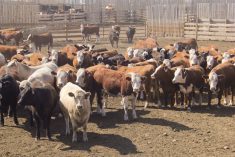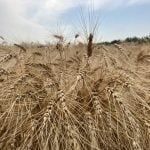Chicago | Reuters – Chicago Board of Trade wheat futures rallied on Tuesday, extending a six-day ascent to highs not seen in three months, after the U.S. government announced another hefty private sale of U.S. wheat to China.
Soybeans ended narrowly mixed as traders monitored crop weather in top soy producer Brazil, while corn rose for a fifth straight session.
Benchmark CBOT March wheat WH24 finished up 10-3/4 cents at $6.31-1/4 per bushel after reaching $6.36-1/4, the contract’s highest since Sept. 7.
Wheat rose after U.S. Department of Agriculture (USDA) confirmed private sales of 198,000 metric tons of U.S. soft red winter wheat to China, the second such sale in as many days. Monday’s announcement that China had purchased 440,000 tons of the grain, the largest one-off U.S. wheat export sale to China since at least 2020, added impetus to a recent rally.
Read Also

U.S. livestock: Feeder cattle hit contract highs on tight supply
Chicago | Reuters – All Chicago Mercantile Exchange feeder cattle futures and most live cattle futures hit contract highs on…
“China typically doesn’t import wheat from us. We typically don’t sell wheat to anybody,” said Ed Duggan, a risk management specialist at Top Third Ag Marketing.
The news buoyed a wheat market in which speculators and funds hold a huge net short position, making it vulnerable to bouts of short-covering that push prices higher.
CBOT March corn CH24 settled up 5 cents at $4.90-1/2 a bushel, its highest close since Nov. 16. CBOT January soybeans Sv1 settled down 3/4 a cent at $13.05-1/2 per bushel, paring losses after a dip to $12.94, the contract’s lowest since Oct. 26.
Crop weather in dry areas of Brazil remained a key issue. Recent downpours coupled with more rains expected in the coming weeks could bring much-needed relief to the region and bolster yield prospects in the world’s biggest soy supplier.
Attention in grain markets is turning too towards Friday’s monthly world crop report from the U.S. Department of Agriculture, which will include updated crop production estimates for South America. USDA/EST
–Additional reporting by Gus Trompiz in Paris and Peter Hobson in Canberra
















